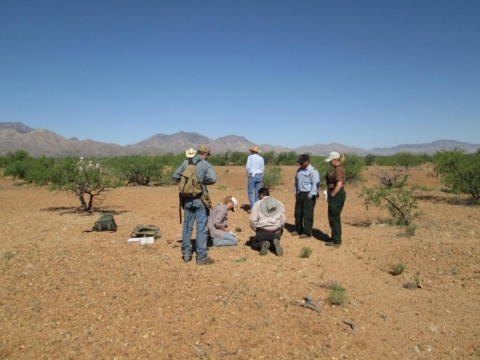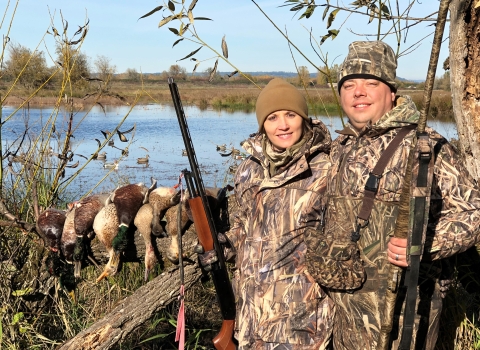If you look at the endangered species list it is amazing and heartbreaking to see how many make the cut. Many wildlife refuges are responsible for managing and protecting endangered species big and small. Some management can be as simple as leaving them alone and monitoring their numbers while others require quite a bit more work. One way to get all-hands-on-deck for these high-management species is to search for partnerships.
Not Your Ordinary Pineapple
The Buenos Aires National Wildlife Refuge is nearly 118,000 acres of grassland and, since the refuge’s establishment, prescribed fire has been a central management tool. Burning can be a great benefit to the landscape by reducing hazardous fuels and by improving soil nutrients. After we burn, we aerate and re-seed with native grasses and shrubs. Sounds great, right? Here’s the catch. The refuge also has the endangered Pima pineapple cactus, a small unassuming cactus that is sprinkled across a wide span of the refuge. So, before we can put flame to floor, we have to survey all acres to be burned to ensure the cactus is protected. That is quite the task.
Collaboration Investigation
By 2015, the refuge burned up to 2,000 acres per year and, with only one full-time biologist, the pre-burn cactus surveys could be time consuming. Each survey requires a well-trained eye and full coverage of the burn unit to ensure that if a cactus is out there, it will be spotted. The refuge handled this sizable task by calling in the forces. Not only did refuge employees all join in, from the fire crew to maintenance workers and refuge managers, but they also reached out to college students studying in the field of biology. This brought staff investment in the cacti’s protection, provided students with the training and field experience to grow their biological portfolio, and provided valuable outreach about a species whose unassuming nature makes it fade into the background of this desert landscape.
Ready, Set, Go!
Students and staff gathered early in the morning and got the training they needed to recognize the cactus, learn the survey technique and learn the process for proper documentation before everyone headed out into the field. All participants stood side-by-side and on the word “Go,” started their sweep through the rocky terrain patched with knee-high grass and a peppering of mesquite. As new Pima pineapple cacti were spotted, the team halted and the sighting was verified and documented. The survey could take days to weeks depending on how many units would be burned; but with great collaboration of invested individuals, this well-oiled system ensured that the cactus if found, was recorded and protected. After all surveys were completed the fire crew went back in and created fire breaks around each one, ensuring its safety.
Walk the Line
After the fire, known cacti were re-visited to make sure they were all still safe and sound. Coordinating a prescribed fire alone is a huge feat from coordinating fire crews from other stations and agencies, planning for weather, communicating with the neighbors and visitors, ensuring safety and compliance, coordinating law enforcement for traffic control and human safety and so much more. Endangered species are just one more vital consideration that must take a starring role. Working together and finding helping hands makes it manageable, efficient and responsible. From bold and brilliant to meek and mysterious, endangered species need our help. Together we can walk the line to protect a species if we communicate, coordinate and cooperate.





